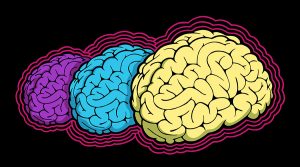
Recently in class discussions we had the chance to look at Autism Spectrum Disorders (ASD). ASD currently affects roughly 1 in 68 children. ASD shows abnormalities in social behavior. While I was growing up, I was fortunate enough to get to know two kids with ASD. The two kids were both in my grade and each of the showed a skill that they exceeded in. One of the kids would take sports statistics and memorize them. His brain loved numbers, but only numbers specific to sports. If I had asked him a certain score of a game played in 1990 between the Minnesota Vikings and Green Bay Packer, he would have told me right on the spot. The other kid was a walking calculator. He knew any math problem laid in front of him.
As these skills continued to progress, the two kids’ social behaviors drastically continued to decrease. Social interactions and communication started to become exceedingly difficult and that is when I found out they had ASD. Both kids also shared a rare diagnosis of savant’s syndrome as well. Savants syndrome basically sums up to be where one area of your brain shows extreme supremacy over others. This would explain the rare skills that both these kids showed. In most cases, savant patients also have ASD. After reading our class discussion, it started to make sense to me on how this might come to be. One of the theories discussed in the development of ASD is neural connectivity. In autism, patients undergo an overabundant number of neurons. This overabundance disables connections between the brain interactions. So, we ultimately get cut off connections which impair the brain in certain areas down the way, but in some cases these neurons may drastically increase the capability of the portion of the brain they are stuck in. This would perhaps explain savant syndrome.
There are many other theories that tie into the development of ASD with one of them being the impairment of synaptogenesis. This theory explains how in early life, our brain has a lot of synapse formation and with synaptogenesis, the removal of certain synapses takes place. This process is important in the fact that synapses are being taken out and they are the correct ones. In ASD this process is impaired, and the consequences would be brain underdevelopment leading to dysfunctional behaviors.
Although both theories make sense, I like to focus on neural connectivity. Again, bringing it back to my experience and relating savant syndrome to autism, I feel neural connectivity is the main issue. In savants I now can picture their brain. In my artstract below you can see an outline of what I feel is going on. In a human brain connection are supposed to connect the dots. These connections are supposed to be smooth and transfer from one to another without issues. In a ASD or savant syndrome brain we see that only a few of the dots are connected before there is a barrier where you cannot get to the next dot. In my experience, the portion of the brain that was controlling numbers was the dot that was connected, but then there became a barrier when trying to connect to the social interaction dot.

Of course, ASD is a lot more complicated then connecting dots but it is a graphic that helps me. In my experience with ASD I never had the chance to see others. In the cases where I knew the individual I thought their behavior was normal for ASD. However, they also had the rare diagnosis of Savants as well. Learning about ASD more in depth and the complexity of the disease has opened my eyes to the severity that ASD holds.